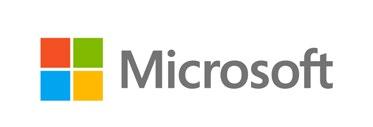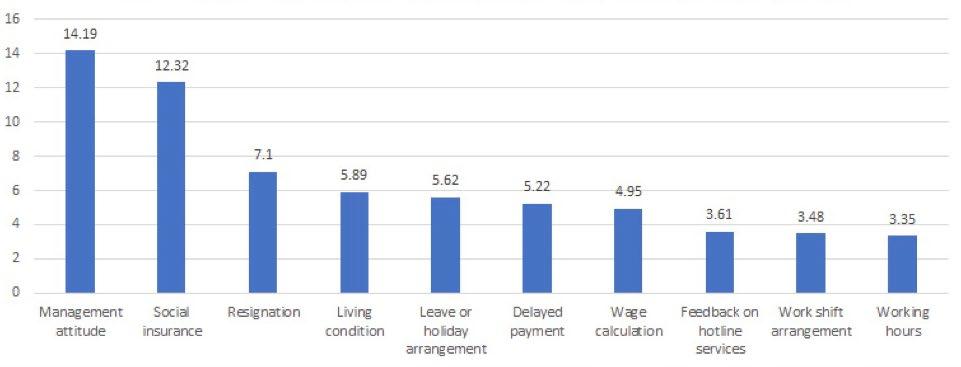
4 minute read
Microsoft – Empowering Workers Through Microsoft’s Worker Voice Hotline
EMPOWERING WORKERS THROUGH MICROSOFT’S WORKER VOICE HOTLINE
In the factory setting, there can be barriers to transparency and the mitigation of issues related to worker safety, environmental health, and human rights. While audits are instrumental in bringing safety, social and environmental issues to light, there are limitations inherent in the process. First, issues may occur for extended periods of remediation. Second, even though the audit process includes worker interviews, the information gathered through the interview process is relatively limited. Workers may refrain from expressing concerns freely for fear of retaliation. Third, in many instances, existing worker grievance management systems are not sufficiently effective to receive, evaluate and properly address workers’ concerns to Microsoft standards. Microsoft needed a solution that would adequately empower workers to report issues without fear of retaliation and to enable timely response and remediation by the factory’s management.
Advertisement
APPROACH AND SOLUTION
The Microsoft Devices Responsible Sourcing team developed and launched a Workers’ Voice Hotline program. The Hotline was designed to provide a reliable and anonymous channel for workers to ask questions or raise concerns regarding general time before they are identified, resulting in delayed
working conditions and employee welfare. Building a sense of trust in the program was essential so that workers would feel free to use the Hotline without concern for possible retaliation. Microsoft’s solution was to establish a system run by a thirdparty to preserve greater worker anonymity. Workers are empowered to freely report concerns or ask questions using either a toll-free number or instant messaging for easy access and availability. Dedicated third-party investigators, Hotline operators, and Microsoft Devices Responsible Sourcing experts follow up on all reported cases. In-person orientations drive awareness and adoption of the Hotline as a reliable and anonymous trusted channel for workers to ask questions and raise concerns.

Top 10 inquiry and reported case topics, April 2014-June 2019 (Percentage)
Upon receiving the calls or messages, Hotline operators categorize the reported concerns into different groups, such as “consultation,” “complaint,” or “suggestion.” Each of these categories warrants a different type of response and procedures for addressing inquiries received through each category are designed accordingly. To address the reported concerns, dedicated thirdparty investigators, Hotline operators, and Microsoft Devices Responsible Sourcing experts follow up on the reported cases. Some issues raised through the Hotline, such as questions about wage calculations, are addressed by the Hotline operators. Other issues may require deeper inspection through onsite investigations, audits, or engagement with the suppliers and other internal stakeholders. One of the methods used to build trust and encourage Hotline use is annual on-site orientations at Tier 1 supplier facilities. The orientations include training on basic environmental, health and safety topics and labor rights, and how to use the Hotline. A key function of the orientation is to allow the workers to build trust and establish relationships with the Hotline operators who are part of the training. Trainings typically include 50-200 attendees per one-hour training session, with several sessions delivered over 1-2 days. Another key component in building trust and encouraging use of the Hotline has been capability-building among the third-party Hotline operators. To achieve this, Microsoft provides training in worker counseling and providing support. To monitor quality, the company places random test calls to the Hotline and conducts regular performance reviews with Hotline operators. In addition, Microsoft collects feedback from workers about the Hotline during on-site orientations and make changes or improvements as needed. To extend the program reach beyond our Tier 1 Devices Final Assembly suppliers, we expanded the Hotline availability to our Tier 2 Devices Component suppliers through our third-party auditors. The auditors are trained to distribute information about the Hotline and how to use it during the third-party audits. With the launch of this extended coverage, there has been an increase in reported issues through the Hotline related to audit questions. By extending the Hotline to the workers during the audits, Microsoft is able to provide workers with an additional channel for them to report issues anonymously without fear of retaliation from their employers.
KEY OUTCOMES
After five years of operating the Hotline program for suppliers in mainland China, there are multiple benefits for supplier factories and their workers. Management systems are more transparent, efficient and interactive; workers have indicated increased overall satisfaction with factory management; and timely information about worker issues has helped drive improvements in working and living conditions. The success of the Hotline program is evident by its increased acceptance and use by the workers. By the end of June 2019, the Hotline had received, analyzed and addressed 747 cases. In fiscal year 2019 (FY19) alone, Microsoft received 152 Hotline cases, representing an increase of 32 percent compared with the number of cases in FY18. The program reached 241,230 workers in FY19, including both our Tier 1 Devices Assembly supplier workers and Tier 2 Component supplier workers. The Workers’ Voice Hotline program has served as a platform for workers to make their voices heard fully and freely. The program serves to facilitate communication between the suppliers and their workers, thereby opening possibilities for suppliers and workers to provide and receive meaningful feedback. This in turn has enabled suppliers to implement improvements to worker programs and factory environment.

